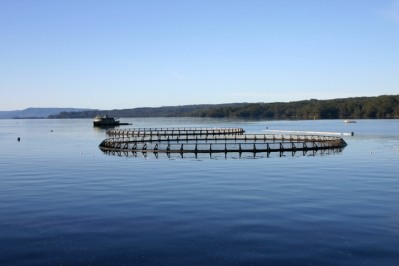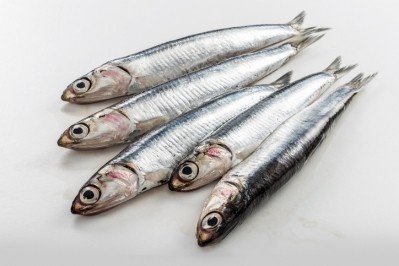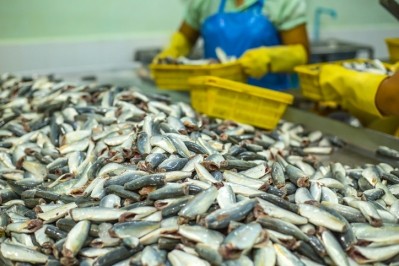BioMar sees ratings tool as way to foster the use of more sustainable raw materials

The aim of the Danish fish feed company’s comprehensive assessment tool based on BASF methodology - Sustainable Solution Steering – is full transparency, impact assessment, and documentation from all raw materials it uses to their end-product application.
“The work is about 70% completed, we aim to be done by Q3 this year, it is a complex methodology; we need to think about so many things at the same time. Our sustainability analyst, Erik Gracey, is more or less working full-time on this now,” said Vidar Gundersen, global sustainability director, BioMar.
The ultimate objective of the tool, says the company, is to optimize product portfolios based on an ambitious sustainability criteria, taking into account the environment, human development, and economic viability.
Knowledge gained during the assessment may also enable the Danish firm to put pressure on some raw material suppliers to alter practice or risk not being a supplier to BioMar.
“Each ingredient needs to be linked to a specific supplier because the practices of one supplier may be different from another one and that is also considered in this methodology.”
The tool, which we also reported on 12 months ago, is designed to assess each ingredient across different sourcing regions, allowing impact assessment at the country or fishery of origin. To complete the value chain, the tool also takes into account consumer perception and market acceptance in the 'application region', or the final market where the seafood product is consumed.
This market perspective is crucial for farmers and their wholesale/retail customers, he said. Globally, there are considerable differences in market acceptance of raw materials and technologies. In a region like Europe, examples of contentious ingredients would be processed animal proteins (PAPs) and genetically modified (GM) soy, but such ingredients have strong market acceptance elsewhere.
“We have divided the world into five regions not according to geography, but rather in terms of market acceptance: (1) US, Canada, Australia, and New Zealand; (2) Europe and Russia; (3) The Middle East, Africa, and Turkey; (4) rest of Americas; and finally (5) Asia. There are of course differences within those regions, but for practical reasons we had to divide it up like that. We try to see everything as holistically as we can,” Gundersen told us.
BioMar also needs to take into account the views of NGOs and a plethora of stakeholders in various markets. “We look at the whole value chain, and perform hotspot analyses with our customers to identify risks or concerns related to raw materials in their market, and apply that in our Sustainable Solution Steering methodology.”
The methodology grades raw materials into one of four assessment categories: The Accelerator, the Performer, the Transitioner, and Challenged.
The Accelerator category is for raw materials that demonstrate a substantial contribution to sustainability in the value chain, such as MSC sourced Antarctic Krill or AlgaPrime DHA.
Performer rated raw materials would meet the standard market requirements.
Transitioner ingredients have specific sustainability issues - for example, a significantly higher CO2 footprint compared to a benchmark ingredient. This triggers a 'Concern Intensity Assessment' to determine the level of urgency and the challenge to reach a solution for the issue. A transitioner is an issue that can be solved through a BioMar – Supplier action plan with medium or less effort.
Challenged ingredients do not meet the relevant sustainability criteria sufficiently and would trigger an aggressive action plan to rectify the issues. If the action plan proves too resource intensive or fails in its outcome, the supplier and the ingredient may disqualified itself as a BioMar supplier.
Certified material targets
In 2015, BioMar addressed the sustainability of their raw materials by setting ambitious targets for the use of certified products. These KPIs included 100% certification of all soy protein, krill and palm oil and 70% of all fish meal and fish oil. While soy protein remains on track to achieve its 2020 objective, all other ingredients have met or exceeded expectations, it said. In its sustainability report published last month, BioMar raised the bar on its targets for fish meal and fish oil to 80% certified material by 2020.
Regarding why it can’t reach a target of 100% certified marine raw material sourcing, Gundersen said:
“We had set 70% as a goal and we have been above that all along, but then we decided to raise the bar as 70% wasn’t ambitious enough. The challenge here is that stock management is dynamic and a source fishery might lose its certification from time to time. That means we would then have to source from a totally different area to satisfy our goals.
“We are waiting to see how the Aquaculture Stewardship Council (ASC) feed standard will turn out. Certified material normally means MSC or IFFO RS material, but if the new ASC standard were to also include materials from fisheries under improvement programs that would help.”
“We know that some fisheries are vulnerable and not all of them very well managed. It is all about trying to drive responsible practices – that is what we are trying to do.”
He is unsure at this point, though, when exactly the ASC feed standard is likely to make its market entry; the standard has been through two public consultations. “A lot depends on the outcome of the next steering committee.”
The use of the Sustainable Solution Steering methodology will also support communications internally:
“We have acquired some new mills recently and, of course, they have their own way of sourcing. The Ecuador business uses a lot of soy in its shrimp production, but in those markets, customers don’t really ask for certified material. There is a premium on those ingredients. When we grow as a company through acquisition, we need to go in and try to establish a common culture of how we do things, practices. That is not always easy. It is easier when we grow organically, but when you acquire a company it can be tougher.”
Third revolution
Gundersen said BioMar sees the aquaculture industry as being on the brink of a third feed ingredient revolution. He was referencing the development of novel ingredients from single cell technology, the use of bioreactors, the move towards fermented ingredients, and production models where the process can be controlled and ingredients manufactured in a more desirable, sustainable way.
“The first ingredient revolution in fish feed was the incorporation of plant proteins, and that happened in the early 1990s. The second revolution was in the use of plant oils and that occurred in the late 90s, and after that not much really happened – of course there was optimization of feed formulations – but on the ingredient side nothing much happened, until now. For us, this was taking in the microalgae sourced omega-3 – AlgaPrime DHA – on a commercial scale.”
“We see other things coming in like insects, bioproteins, and more fermented materials, but I think the whole value chain has a responsibility to steer this development. Such ingredients will, initially, be more costly. It is about building scale and driving down those costs. Our customers and their customers should do their utmost to ensure these ingredients are used in fish feed as some of them might be groundbreaking in [terms of their] sustainability.”















